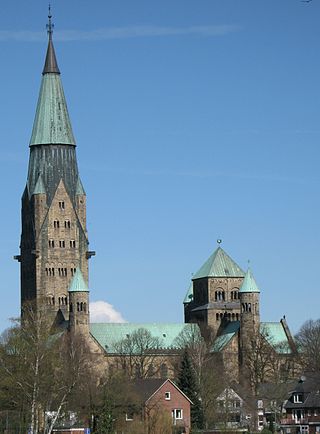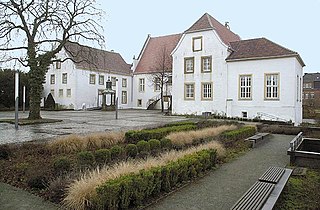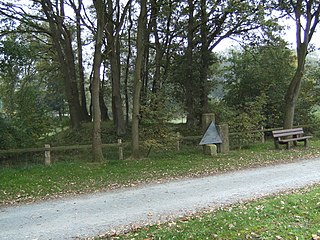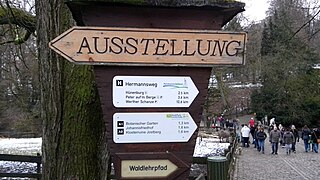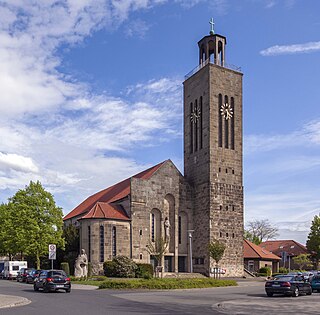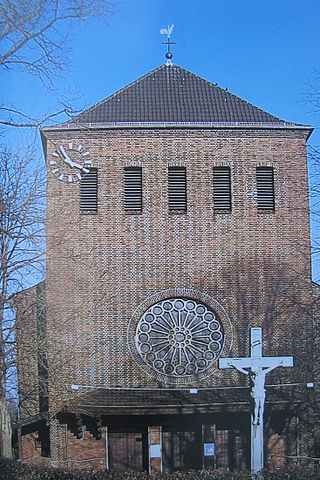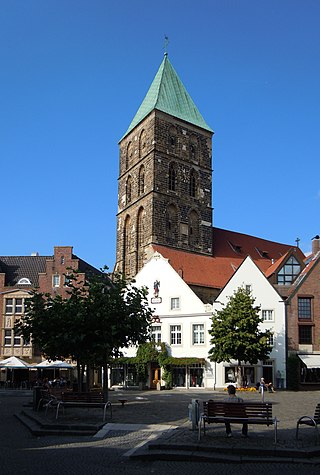10 Sights in Rheine, Germany (with Map and Images)
Legend
Explore interesting sights in Rheine, Germany. Click on a marker on the map to view details about it. Underneath is an overview of the sights with images. A total of 10 sights are available in Rheine, Germany.
Sightseeing Tours in Rheine1. St. Antonius-Basilika
St. Anthony's Basilica is a neo-Romanesque church building in Rheine - Eschendorf. The church was built between 1899 and 1905 in the style of a Romanesque imperial cathedral and dedicated to Saint Anthony of Padua. It lies to the right of the Ems on Osnabrücker Straße and is the parish church of the Catholic parish of St. Antonius in Rheine. With 650 seats, a total length of 90 meters and a maximum width of 39 meters, the representative building is the largest church in the cityand dominates the image of the district with its imposing dimensions. The St. Antonius Basilica is considered to be one of the most elaborate and important church buildings of late historicism in Germany.
2. Falkenhof-Museum
Falkenhof is the name of a former aristocratic residence in Rheine. The later Falkenhof originated from a Carolingian royal estate, which was probably established at the end of the 8th or beginning of the 9th century. This royal estate was called Villa Reni and is considered the nucleus of today's city of Rheine. The first documented mention of Villa Reni in a deed of donation by Louis the Pious dates back to 838. The foundation of the royal estate took place against the background of the Frankish missionary and occupation policy in the course of Charlemagne's Saxon Wars.
3. Großsteingrab von Rheine
The Großsteingrab of Rheine is located in the present-day Rhein district of Schotthock am Lingener Damm (Straße) from Rheine to Lingen (Ems) in the outer northwest of Westfalen, in the district of Steinfurt near the border to Emsland in Lower Saxony, rich in megalith. It was formed between 3500 and 2800 BC and is a megalith system of the funnel cup culture (TBK) with the Sprockhoff No. 981. Neolithic monuments are an expression of the culture and ideology of Neolithic societies. Their origin and function are considered to be the characteristics of social development.
4. Hermannsweg
The Hermannsweg is a 156 kilometres (97 mi) long hiking trail which follows the ridge of the Teutoburg Forest, running from Rheine to Velmerstot in Germany. It is marked by signposts showing a white H on a black background. The Hermannsweg has been named for Arminius, a Cherusci chief who defeated the Romans in the Battle of the Teutoburg Forest in 9 AD. Together with the 70 kilometres (43 mi) long Eggeweg, this long-distance hiking trail forms the Hermannshöhen. It is maintained by the Teutoburger-Wald-Verein e.V. located in Bielefeld.
5. Sankt Elisabeth
The Catholic parish church of St. Elisabeth in Rheine is a New Objectivity building designed by the Gelsenkirchen architect Josef Franke. Since the merger of all originally independent parishes on the left bank of the Ems in 2013, it has been one of five churches in the parish of St. Dionysius. Since 1982, it has been a listed building together with the adjoining rectory as an ensemble.
6. Alter jüdischer Friedhof
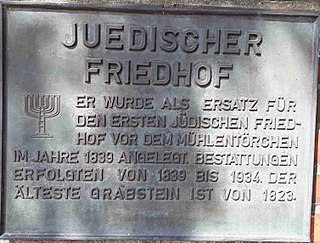
The Jewish Cemetery in Rheine, Lingener Straße, also known as the Old Jewish Cemetery, is located in the town of Rheine in the district of Steinfurt in North Rhine-Westphalia, Germany. As a Jewish cemetery, it is an architectural monument. In the cemetery in Lingener Strasse, 65 gravestones have been preserved.
Wikipedia: Jüdischer Friedhof (Rheine, Lingener Straße) (DE)
7. Naturzoo Rheine
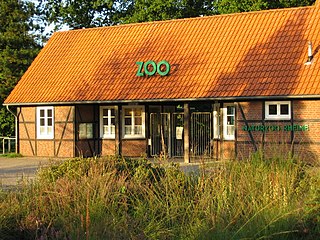
Rheine Nature Zoo is located in the north of the city of Rheine in the Münsterland region. Together with the Gottesgabe salt works, the Bentlage monastery and the surrounding Bentlager forest, it forms a local recreation area. The zoo has an area of 13 hectares.
8. Herz Jesu
The Roman Catholic Church of the Sacred Heart of Jesus is located in Rheine, a town in the district of Steinfurt in North Rhine-Westphalia. The church belongs to the parish of St. Antonius Rheine in the deanery of Rheine in the diocese of Münster.
9. Schwanenburg
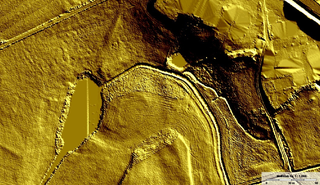
The Schwanenburg is an abandoned moated castle in Elte near Rheine in North Rhine-Westphalia, Germany. It was probably built in the 13th century by the noble lords of Steinfurt, who had a swan in their coat of arms, on the right bank of the Ems.
10. St. Dionysius
The Roman Catholic parish church of St. Dionysius in Rheine, also known here simply as the town church, is a late Gothic hall church from the period from about 1400 to 1520. It is the most traditional place of worship in the city.
Share
Disclaimer Please be aware of your surroundings and do not enter private property. We are not liable for any damages that occur during the tours.
